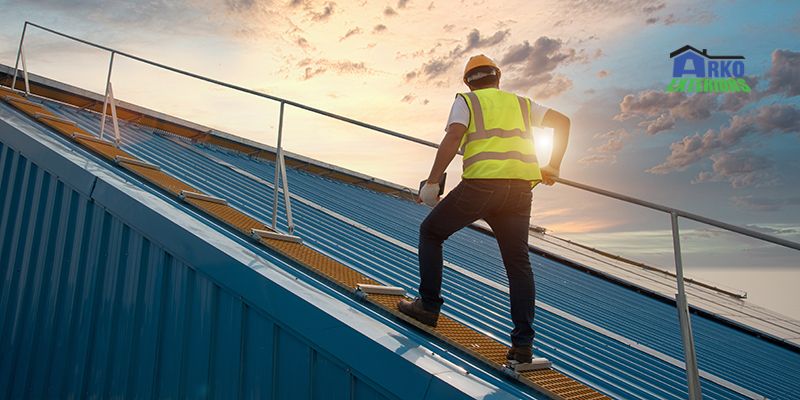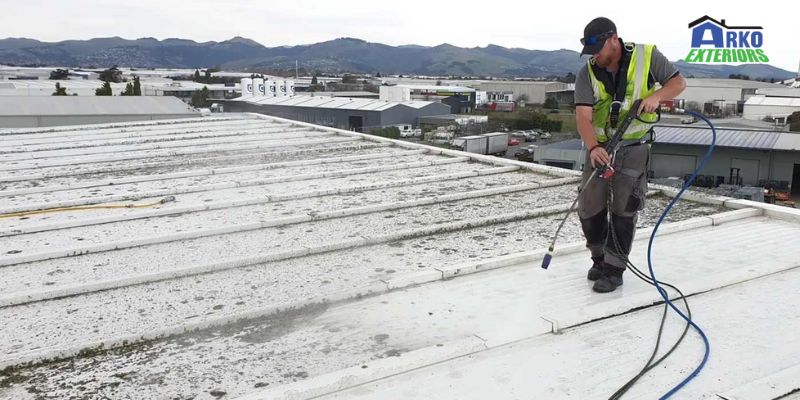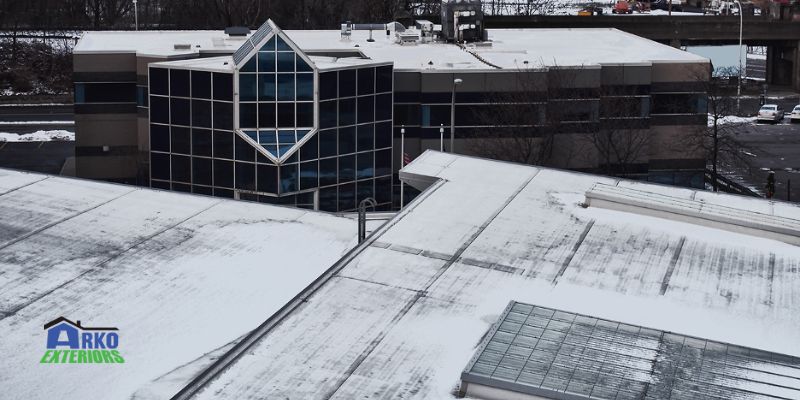As winter approaches, it is crucial to ensure your commercial roof is ready to withstand the harsh elements. Neglecting proper preparation can lead to costly issues that extend beyond the roof itself, affecting the entire building. To safeguard your investment, schedule a thorough cleaning and inspection with an experienced commercial roofing professional in the fall.
How To Be Prepared for Commercial Roofing Issues This Winter
As the winter season draws near, you need your commercial roof to be ready. This is because the elements can affect its functionality. As a result, you need to be prepared to avoid issues during winter. Here are the things that you can do to prevent issues with your commercial roofing systems in the winter:
1. Schedule roof inspections

Your fall roof inspection is essential for the proper care and maintenance of your roofing system. It is during this inspection that you will identify any problems that you may not have been aware of.
Addressing these issues now, before they harm your roof, is why the inspection is so important. In winter, an emergency roof repair can be very costly, while an inspection and small repair can be much more affordable.
Also, during the freeze-thaw cycle in the winter, small holes in your roof membrane can become larger, allowing water to enter and cause leaks inside your building. If your problems revolve around clogged drains, water can back up and freeze in the drains, causing pipes to burst.
As a result, your roof inspection should include the following: checking downspouts and gutters to keep them clear, removing all clutter and debris from around the drainage pipes, making sure that the flashing and seals are closed to the elements, making sure that the membrane has no holes and no ponding, and keeping the vents free of debris.
2. Clean your commercial roof

Before a thorough roof inspection, it is recommended to engage a roofing professional for a comprehensive rooftop cleaning. This is a measure that eliminates debris and enables a careful examination of every aspect of the roof.
By removing potential hazards such as rotting, mold, moss, and blocked drainage, the risk of these issues arising during the winter and persisting into the spring is significantly mitigated.
During the cleaning process, the roofing professional should also look out for signs of animal infestation. Animals seeking shelter from the cold may find refuge on your rooftop, posing a threat to the structural integrity of the roof.
Additionally, food scraps, droppings, nesting material, and other animal remnants can accumulate and cause significant problems for your roof throughout the year. Addressing these issues to deter animal habitation on your rooftop is crucial for maintaining the long-term health and functionality of your roofing system.
3. Repair your roof before winter
If you want to get ahead of your roofing problems, repairs should be scheduled before winter. There are many reasons why you should do this, and there are big concerns you can face if you wait until winter to repair your roof.
Note that winter repairs can be inconvenient for both the owner and the users of the property. Snow can create safety hazards, and roofing materials may need to be warmed up before they can be installed. Additionally, snow can cover up hazards and risks on the roof that could be potentially dangerous.
Weather variations might worsen roofing issues as well. For instance, ice formations on the roof may cause drainage to become impeded, ponding problems to worsen, and leak-causing holes to enlarge.
The fact that winter can exacerbate any existing roof issues is another excellent reason to get your roof repairs done now. For instance, snowmelt on the roof can exacerbate leaks. That water can enlarge cracks in roofing membranes if it refreezes.
4. Create a snow removal plan
In regions prone to harsh winters, the management of commercial roofs during the cold season becomes a critical task, often requiring regular snow removal. The accumulation of snow on the roof poses several potential hazards, affecting both the roof’s integrity and the overall structural stability of the building.
The weight of the snow can overburden the roof structure, increasing the likelihood of structural damage or even collapse. Additionally, snowmelt can infiltrate roof joints, leading to leaks and water damage within the building.
While addressing snow buildup is essential, it is equally crucial to approach the removal process with care. Improper snow removal techniques can damage the roof membranes, increase the risk of leaks, and compromise the roof’s lifespan.
To mitigate these risks, strategic planning is essential. It is advisable to determine when snow removal is necessary and to communicate these plans effectively with a qualified snow removal contractor. By doing so, property owners can safeguard their commercial roofs.
5. Emergency repair kit
In the face of unforeseen challenges, particularly during the harsh winter months, an emergency repairs kit is an essential tool for homeowners and property managers. By assembling a well-stocked kit equipped with the necessary materials for temporary fixes, you can effectively address potential issues and minimize the risk of further damage.
A crucial component of your emergency repairs kit should be durable tarpaulins. These are versatile coverings that can provide instant shelter from the elements, protecting your property from rain, snow, and wind. They can also be used to cover damaged areas, preventing further exposure to the elements and minimizing the potential for water damage.
Additionally, high-quality sealants are another indispensable item for your emergency repairs kit. These sealants can form quick and reliable seals, effectively preventing leaks and minimizing water damage. Choose sealants that are suitable for a variety of surfaces.
Conclusion
It is important to prepare for commercial roofing problems in the winter. Potential damages can be minimized by doing routine inspections, making repairs on time, and keeping an emergency supply kit. Businesses can protect their resources and guarantee the durability of their roofing systems during the winter by taking preventive measures.

